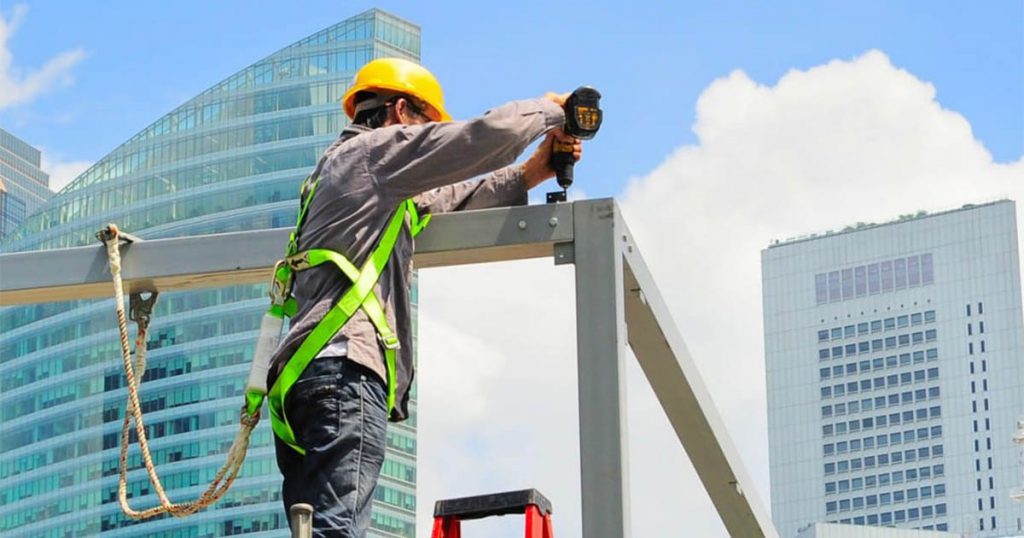The Housing Development Board (HDB) is exploring several tech initiatives to improve safety standards and building efficiency in Singapore’s construction industry.
In a media briefing last Thursday (12th September), HDB said that is testing a new artificial intelligence (AI) surveillance system to prevent two of the most common causes of worksite accidents.
The AI — created in collaboration with the National University of Singapore’s School of Design and Environment — will be connected to CCTV’s around construction sites, allowing it to identify and monitor high-risk zones in real-time.
When a worker comes within one metre of a non-barricade edge with a drop of more than two metres or under the path of heavy loads lifted by tower cranes, it will send a Telegram message to site supervisors, notifying them of the safety breach and prompting them to take action.
“A centralised and automated surveillance system will enable safety personnel to simultaneously monitor different work sites round-the-clock, thus allowing greater coverage with less manpower,” HDB said in a press release.
“The automated system will reduce the risk of inconsistent safety standards across different supervising personnel, as well as human errors that could occur due to fatigue.”
Currently, construction sites are manually overseen by site supervisors and Workplace, Safety and Health Officers (WSHO), which HDB says is a “resource intensive endeavour.”
The system is currently being trialled at the Clementi Peaks Build-to-Order (BTO), and will last till the fourth quarter of 2020. If successful, HDB said that the system could be scaled up to monitor other scenarios, such as workers standing in the path of vehicles or entering unauthorised spaces without permission.
3D Printed Houses?
In addition to improving safety standards in work sites, HDB is also exploring the possibility of using 3D printing as a construction method as well.
In the future, 3D printing could potentially be used to build entire high-rise houses. Trials are currently being done at the HDB Centre of Building Research in Woodlands, which is touted as the largest 3D printer in South-east Asia.
The printer — which can create components up to 9m long by 3.5m wide by 3.8m tall — printed a room measuring 3.6m x 3m x 2.75m in 13 hours. The manual insertion of steel reinforcement bars and windows brought the total production time to six days, which is still a marked improvement over the two months it would take to build the same room using conventional methods.
Additional tests, however, must still be done to assess if this method is feasible in Singapore’s climate. In the immediate future, 3D printing will be used to smaller components such as landscape furniture and 3D artwork in the upcoming Tengah and Bidadari estates.
In addition to being faster, cheaper and less labour-intensive to produce, 3D printing also opens new possibilities when it comes to design, allowing for “intricate detail or geometric forms that would be near impossible to create with traditional methods.”
“Architects and designers would have more free play in their designs, greater flexibility, and since the processes is highly automated, that reduces the dependency on manual labour,” said HDB’s deputy director of building design and precast system Heru Soedarsono.
“The use of 3D concrete printing has opened up new and exciting possibilities for the future of construction.”
Feature Image Credit: Construction Singapore











